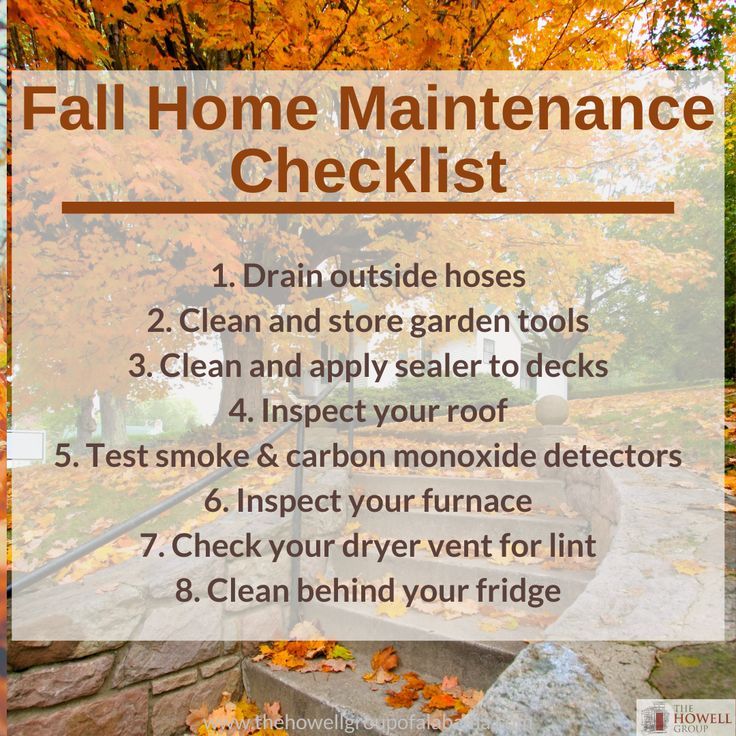Autumn House Maintenance Extending its Lifespan
Autumn House maintenance tips for extending its lifespan are crucial for preserving your home’s value and ensuring its longevity. As the leaves change and the weather turns colder, your house faces unique challenges. Proactive maintenance now can prevent costly repairs later, protecting your investment and ensuring a comfortable winter. This guide will walk you through essential autumn tasks, from roof inspections to heating system checks, equipping you to safeguard your home against the elements.
From preventing water damage to preparing your plumbing for freezing temperatures, this guide offers practical steps to protect your home’s structural integrity and energy efficiency. We’ll cover everything from inspecting your roof and gutters to sealing windows and doors, ensuring your home is prepared for the harsh winter months ahead. By following these simple yet effective maintenance tips, you can significantly extend the lifespan of your property and enjoy a warmer, more comfortable winter.
Roof Inspection and Maintenance
Autumn brings unique challenges for your roof, from falling leaves to increased rainfall and potential early snowfall in some regions. Regular inspection and preventative maintenance during this season are crucial for extending its lifespan and preventing costly repairs down the line. Neglecting your roof during autumn can lead to significant damage, potentially impacting the structural integrity of your home.
Autumn Roof Inspection Checklist
A thorough roof inspection in autumn should be a priority. This involves visually examining all aspects of your roof for signs of damage or deterioration. Addressing issues promptly can prevent minor problems from escalating into major, expensive repairs.
- Check for missing, damaged, or loose shingles: Look for curled, cracked, or broken shingles, paying close attention to areas prone to wind damage. Missing granules indicate wear and tear, requiring attention.
- Inspect flashing around chimneys, vents, and skylights: These areas are particularly vulnerable to leaks. Ensure flashing is properly sealed and free from rust or damage. Look for signs of water staining or discoloration around these areas, which could signal a leak.
- Examine gutters and downspouts: Clear gutters of leaves and debris to prevent water buildup and ice dams in winter. Ensure downspouts are free-flowing and directed away from the foundation to avoid water damage.
- Check for signs of moss or algae growth: Moss and algae can retain moisture and damage shingles. Identify areas of growth and consider cleaning or treatment to prevent further damage.
- Assess the condition of roof valleys: Valleys are low points where water collects, making them susceptible to leaks. Inspect for any signs of deterioration or ponding water.
- Inspect the attic for signs of leaks: Look for water stains, mold, or mildew on the ceiling or walls. This can indicate leaks that need immediate attention.
Preventative Maintenance for Autumn Weather Conditions
Autumn’s high winds, heavy rains, and early snowfall can significantly impact your roof’s condition. Preventative maintenance focuses on mitigating these risks and extending the lifespan of your roofing material.Regular cleaning of gutters and downspouts is paramount. Leaves and debris can clog these systems, leading to water damage. Consider installing gutter guards to minimize the frequency of cleaning. Additionally, inspecting and repairing damaged flashing around chimneys and vents is crucial to prevent water infiltration.
Finally, addressing any loose or damaged shingles promptly can prevent further deterioration and potential leaks. In regions with early snowfall, ensuring your roof is clear of debris before the first snowfall minimizes the risk of ice dam formation.
Roofing Material Comparison: Autumn Maintenance
Different roofing materials require varying levels of autumn maintenance. The following table provides a general comparison:
| Material | Maintenance Task | Frequency | Cost Estimate |
|---|---|---|---|
| Asphalt Shingles | Inspection for damage, cleaning debris | Annually (Autumn) | $50 – $200 (DIY); $500 – $2000 (Professional) |
| Tile (Clay or Concrete) | Inspection for cracks, cleaning debris, moss removal | Annually (Autumn) | $100 – $500 (DIY); $1000 – $5000 (Professional) |
| Metal (Aluminum or Steel) | Inspection for rust, loose panels, cleaning debris | Annually (Autumn) | $50 – $200 (DIY); $500 – $1500 (Professional) |
| Slate | Inspection for cracks, loose slates, cleaning debris | Annually (Autumn) | $200 – $1000 (DIY); $2000 – $10000 (Professional) |
Gutter Cleaning and Repair: Autumn House Maintenance Tips For Extending Its Lifespan
Autumn’s arrival brings a beautiful display of changing leaves, but it also presents a significant challenge for homeowners: clogged gutters. Leaves, twigs, and other debris accumulate rapidly, potentially causing serious damage to your home’s exterior and foundation if left unattended. Regular gutter cleaning is crucial for preventing costly repairs and maintaining your home’s structural integrity.Autumn’s abundant leaf fall significantly increases the risk of gutter blockage.
This buildup prevents water from flowing freely, leading to several problems. Standing water in gutters can cause them to overflow, leading to damage to siding, fascia boards, and the foundation. Furthermore, the weight of accumulated water and debris can cause gutters to sag, pull away from the house, or even collapse. Ice dams in winter are also more likely to form in gutters clogged with debris.
Therefore, proactive gutter cleaning in autumn is an essential preventative maintenance task.
Safe Gutter Cleaning Procedures
Cleaning gutters requires careful preparation and adherence to safety procedures. Begin by gathering the necessary tools: a sturdy ladder, a garden trowel or scoop, a bucket, work gloves, and possibly a gutter cleaning tool (such as a scoop with a long handle or a gutter cleaning attachment for a power washer). Always inspect the ladder before use, ensuring it’s stable and on level ground.
Have a spotter assist you if possible, especially when working on taller ladders. Wear sturdy shoes and gloves to protect yourself from sharp debris and potential slips. Before starting, clear the area beneath the gutters of any obstacles. Work slowly and methodically, ensuring a firm footing at all times. Begin at one end of the gutter and carefully remove debris, depositing it into the bucket.
Regularly empty the bucket to avoid carrying too heavy a load. Once the gutters are clear, flush them with water using a garden hose to remove any remaining sediment.
Common Autumn Gutter Problems and Solutions
It’s important to be aware of common gutter issues that arise during autumn. Addressing these promptly can prevent more extensive damage.
- Clogged Gutters: This is the most prevalent autumn gutter problem. Solution: Regular cleaning, as described above, is the key to prevention.
- Sagging Gutters: The weight of accumulated water and debris can cause gutters to sag. Solution: This often requires professional attention, as it might involve tightening hangers or replacing sections of the gutter.
- Leaks and Holes: Debris buildup can conceal small leaks or holes, which can worsen over time. Solution: Inspect gutters carefully for any signs of damage. Small holes can often be patched with waterproof sealant; larger repairs may necessitate professional assistance.
- Downspout Blockages: Leaves and debris can clog downspouts, preventing water from draining away from the foundation. Solution: Use a plumbing snake or a high-pressure water hose to clear blockages.
Exterior Wall and Foundation Inspection
Autumn’s fluctuating temperatures and increased rainfall present significant challenges to a home’s exterior walls and foundation. Careful inspection and preventative maintenance during this season can significantly extend the lifespan of your home and prevent costly repairs down the line. Addressing potential issues now will help protect your investment and ensure a comfortable winter.Exterior walls and foundations are particularly vulnerable to damage during autumn.
The transition from warmer to colder temperatures creates stress on building materials, leading to cracks and weakening. Increased rainfall can saturate the ground, putting pressure on foundations and potentially leading to settling or even frost heave in winter. Water intrusion through cracks in walls can cause significant damage, leading to mold growth, structural instability, and interior damage.
Autumn is the ideal time for crucial home maintenance, ensuring your house remains in top condition. Proper gutter cleaning and roof inspections are essential, and don’t forget to schedule those necessary repairs. For visually communicating these maintenance tasks – perhaps creating a shareable checklist – learning how to effectively integrate Canva with other social media platforms, as described in this helpful guide: mengintegrasikan canva dengan platform media sosial lainnya secara efektif , can be incredibly useful.
This allows for efficient project management and clear communication about your home improvement progress.
Sealing Cracks and Repairing Minor Damage
Small cracks in exterior walls and foundation walls are often the entry points for water damage. These cracks, often barely visible, can widen significantly over time due to freeze-thaw cycles. Effective sealing prevents water penetration, protecting the underlying structure from deterioration. For minor cracks, a high-quality exterior-grade caulk is usually sufficient. Larger cracks may require the use of hydraulic cement or specialized crack repair products.
Before applying any sealant, it’s crucial to clean the crack thoroughly, removing any loose debris or old sealant. This ensures proper adhesion and a lasting repair. Applying a sealant in stages, allowing each layer to dry completely, further enhances the effectiveness of the repair. For significant damage, consultation with a structural engineer or experienced contractor is recommended.
Protecting the Foundation from Frost Heave
Frost heave is the upward movement of soil caused by the freezing and expansion of water within the soil. This expansion can exert considerable pressure on the foundation, potentially causing cracks and structural damage. To mitigate frost heave, ensuring proper drainage around the foundation is crucial. This can involve grading the soil to slope away from the house, installing gutters and downspouts to direct water away from the foundation, and ensuring that the ground around the foundation remains free of debris and vegetation.
Adding a layer of gravel or other well-draining material around the foundation can further improve drainage. In areas prone to severe frost heave, specialized foundation insulation may be necessary. This insulation acts as a barrier, reducing the penetration of frost into the ground and minimizing the risk of heave. Regular monitoring of the foundation for signs of movement or cracking, especially after periods of freezing and thawing, is a key preventative measure.
Early detection of problems allows for timely intervention and prevents minor issues from escalating into major repairs.
Window and Door Sealing
Air leaks around windows and doors are a significant source of energy loss in homes, leading to increased heating and cooling costs. These drafts also contribute to moisture problems, potentially causing damage to walls, floors, and even the structural integrity of your house over time, thus shortening its lifespan. Addressing these leaks through proper sealing is a cost-effective way to improve energy efficiency and protect your home’s longevity.Sealing air leaks around windows and doors involves two primary methods: caulking and weatherstripping.
Caulking seals gaps and cracks, while weatherstripping creates a tight seal between the window or door and its frame. Both are crucial for effective protection against drafts and moisture.
Caulking and Weatherstripping Procedures
Before beginning, ensure you have the correct tools and materials. You will need a caulking gun, appropriate caulking, a putty knife for cleaning, weatherstripping material (choose based on your needs – see the table below), and a measuring tape. Clean the surfaces thoroughly to ensure proper adhesion. Remove any loose or old caulk or weatherstripping before applying new material.
1. Preparation
Clean the surfaces to be caulked or weatherstripped thoroughly. Remove any loose paint, debris, or old sealant. A putty knife is useful for this. For best results, slightly dampen the surface with water to help with adhesion.
2. Caulking Application
Cut the tip of the caulking tube at a 45-degree angle, ensuring the opening is the appropriate size for the gap. Apply even pressure to the caulking gun, maintaining a consistent bead along the gap. Smooth the caulking with a wet finger or a smoothing tool for a professional finish. Allow the caulk to cure completely according to the manufacturer’s instructions.
3. Weatherstripping Installation
Measure the length of weatherstripping needed for each window or door. Cut the weatherstripping to the appropriate length, allowing for slight overlap. Peel off the backing and firmly press the weatherstripping into place, ensuring a tight seal against the frame. For more complex shapes or larger gaps, you may need to use different types of weatherstripping.
4. Post-Application
After the caulk and weatherstripping have cured, inspect your work for any gaps or imperfections. Reapply caulk or weatherstripping as needed to ensure a complete seal. Regular inspection is key to maintaining a tight seal over time.
Caulk and Weatherstripping Material Comparison, Autumn House maintenance tips for extending its lifespan
Choosing the right material depends on the specific application and your budget. Here’s a comparison of common options:
| Material | Application | Durability | Cost |
|---|---|---|---|
| Silicone Caulk | Exterior and interior use, high-moisture areas | High, long-lasting, resists mold and mildew | Medium to High |
| Acrylic Latex Caulk | Interior use, less durable than silicone | Medium, paintable | Low to Medium |
| Foam Weatherstripping | Windows and doors, gaps up to 1/4 inch | Medium, can compress over time | Low |
| Felt Weatherstripping | Windows and doors, larger gaps | Medium, can be less durable than other options | Low to Medium |
| Rubber Weatherstripping | Windows and doors, provides a tight seal | High, durable and long-lasting | Medium to High |
Landscaping and Yard Cleanup
Autumn presents a crucial opportunity to prepare your landscaping for the harsh winter months, protecting your home and enhancing its curb appeal. Neglecting these tasks can lead to costly repairs and a less aesthetically pleasing property in the spring. Proper autumn landscaping is an investment in the long-term health and beauty of your home.Preparing your yard and garden for winter involves several key steps that safeguard your plants and prevent potential damage to your property.
These tasks range from simple cleanup to more involved preparations depending on your specific climate and the types of plants you have. Prioritizing these steps now will minimize problems later.
Preparing Flowerbeds and Gardens for Winter
Preparing flowerbeds and gardens for winter involves protecting vulnerable plants from frost and ensuring the soil remains healthy. This process begins with removing dead or dying plants and debris. Next, apply a layer of mulch around plants to insulate their roots and retain soil moisture. The type of mulch you choose (e.g., wood chips, straw) will depend on your climate and soil type.
For example, a heavier mulch like wood chips is ideal in colder climates to provide better insulation. Finally, consider covering particularly sensitive plants with burlap or other protective coverings. This will help them survive the winter and thrive in the spring.
Autumn house maintenance is crucial for longevity; inspecting gutters for debris and cleaning windows are essential first steps. Similarly, regularly checking the health of your digital storage is important, and you can easily learn how to do this by visiting a helpful guide like Cara Cek SSD atau HDD dengan Mudah to ensure your important home maintenance records are safe.
Just as you maintain your home’s exterior, maintaining your digital files ensures you’re prepared for any future needs.
Leaf Disposal and its Impact on Home Protection
Proper leaf disposal is critical for preventing damage to your home and maintaining a tidy appearance. Leaving leaves piled up against your house can create moisture build-up, which encourages mold and mildew growth. Additionally, accumulated leaves can block gutters and downspouts, leading to water damage to your roof, foundation, and walls. Consider using a leaf blower to move leaves away from the house, followed by raking and bagging them for disposal.
Alternatively, composting leaves is an environmentally friendly option, turning them into valuable soil amendment for your garden. However, ensure that any composting piles are located far enough away from the house to prevent moisture problems.
Autumn Landscaping Tasks for Home Protection and Curb Appeal
A well-maintained autumn landscape protects your home and enhances its aesthetic value. The following tasks contribute to both:
- Remove dead or dying plant material: This prevents disease and pests from overwintering.
- Clean gutters and downspouts: Prevents water damage and ice dams in winter.
- Aerate the lawn: Improves soil drainage and allows for better nutrient absorption.
- Fertilize the lawn (if needed): Promotes healthy growth in the spring.
- Trim trees and shrubs: Removes dead branches and prevents damage from winter winds.
- Store garden furniture and tools: Protects them from the elements.
Plumbing System Preparation

Source: pinimg.com
Preparing your plumbing system for the autumn months is crucial for preventing costly and disruptive damage during winter’s freezing temperatures. Taking proactive steps now will safeguard your pipes and ensure a smooth flow of water throughout the colder months. This involves several key actions to protect against freezing and potential bursts.Protecting pipes from freezing involves a multi-pronged approach focusing on insulation, water flow, and preventative measures.
Neglecting these steps can lead to significant water damage and repair expenses.
Preventing Pipe Freezing
Preventing pipes from freezing requires a combination of techniques. Insulating exposed pipes is a primary method, as is ensuring adequate water flow within the system to prevent stagnation. Additionally, keeping your home’s interior temperature above freezing, even when away, is vital. Consider setting your thermostat to at least 68°F (20°C) while you are away for extended periods.
This consistent warmth will prevent the water in your pipes from reaching freezing temperatures. In areas particularly susceptible to freezing, such as unheated basements or crawl spaces, additional insulation around pipes is recommended. This can be achieved using pipe sleeves, foam insulation, or heat tape. Remember to check for leaks around pipes and connections; even a small leak can contribute to freezing.
Draining and Winterizing Outdoor Faucets and Irrigation Systems
Before the first hard frost, draining and winterizing outdoor faucets and irrigation systems is essential. Failure to do so can result in cracked pipes and significant water damage. To drain an outdoor faucet, turn off the water supply valve located inside your home, usually near the faucet’s connection point. Then, open the outdoor faucet to release any remaining water.
For more complete protection, consider installing a frost-proof sillcock, which has an extended valve stem that extends below the frost line. Irrigation systems require a more thorough draining process, often involving shutting off the main water supply, opening drain valves, and blowing compressed air through the lines to remove any remaining water. Consult your irrigation system’s manual for specific instructions.
Consider adding antifreeze to the system if complete draining isn’t feasible.
Locating and Insulating Exposed Pipes
Locating and insulating exposed pipes is a critical step in winterizing your home’s plumbing. Exposed pipes are vulnerable to freezing temperatures, particularly those located in unheated areas like attics, crawl spaces, or exterior walls. Begin by visually inspecting these areas for any visible pipes. Pay close attention to areas where pipes run close to exterior walls or where there is limited insulation.
Once identified, insulation can be applied using various methods. Pipe sleeves made of foam are readily available and easily installed. Heat tape, which generates a small amount of heat to prevent freezing, can also be used for extra protection in particularly cold areas. For pipes located within walls, adding additional insulation to the wall itself can provide indirect protection.
Remember to always consult a professional plumber if you are unsure about any aspect of pipe insulation or repair.
Heating System Checkup
Preparing your heating system for the colder months is crucial for ensuring comfort and preventing costly repairs. A thorough checkup now can save you significant expense and inconvenience later in the season. Neglecting this important task can lead to breakdowns during peak demand, leaving you in the cold and potentially facing expensive emergency repairs.Regular maintenance extends the lifespan of your heating system, improves efficiency, and enhances safety.
By performing a few simple checks and scheduling professional service, you can ensure your heating system operates optimally throughout the winter.
Heating System Inspection Checklist
A pre-winter inspection should cover several key areas to identify potential problems before they escalate. This checklist provides a structured approach to ensure thoroughness.
- Visual Inspection: Carefully examine the furnace or boiler for any signs of damage, rust, or corrosion. Check all connections for leaks or loose fittings. Look for signs of debris accumulation around the unit.
- Thermostat Check: Verify the thermostat is functioning correctly and accurately reflecting the room temperature. Test the settings to ensure proper heating activation and response.
- Gas Line Check (if applicable): If your system uses natural gas, inspect the gas line for any signs of damage, leaks, or corrosion. Never attempt to repair a gas leak yourself; contact a qualified professional immediately.
- Exhaust Vent Inspection: Ensure the exhaust vent is clear of obstructions, such as debris or nesting animals. A blocked vent can lead to dangerous carbon monoxide buildup.
- Pilot Light Check (if applicable): For systems with a standing pilot light, verify it is burning steadily and correctly. A flickering or absent pilot light indicates a problem that needs attention.
Air Filter Change and Vent Cleaning
Clean air filters and heating vents are essential for optimal heating system performance and indoor air quality. A clogged filter restricts airflow, forcing the system to work harder, consuming more energy and potentially leading to premature wear. Dirty vents similarly impede airflow and can harbor dust and allergens.Changing the air filter is a simple task that should be performed every 1-3 months, or more frequently depending on usage and filter type.
The frequency is often indicated on the filter itself. Cleaning vents involves vacuuming or brushing to remove accumulated dust and debris. For hard-to-reach areas, a specialized vent cleaning brush may be necessary.
Scheduling Professional Heating System Maintenance
Scheduling a professional heating system maintenance appointment is a proactive step to ensure optimal performance and longevity. Qualified technicians possess the expertise and tools to perform comprehensive inspections, identify potential issues, and make necessary repairs or adjustments.Professional maintenance typically involves a thorough cleaning of the system, including inspection of components, checking gas pressure (if applicable), and verifying proper operation.
They also perform safety checks to prevent potential hazards like carbon monoxide leaks. Scheduling this service annually, ideally before the start of the heating season, is highly recommended. Many companies offer maintenance plans that provide discounts and priority scheduling. Contacting your heating system installer or a reputable HVAC service provider is the first step in arranging this vital service.
Pest Control
Autumn brings cooler temperatures and shorter days, prompting many insects and rodents to seek shelter indoors. This influx of pests can lead to structural damage, health hazards, and costly repairs if left unchecked. Taking proactive steps to prevent and control pest infestations is crucial for maintaining your home’s integrity and the well-being of its occupants.Preventing pest infestations requires a multi-pronged approach focusing on eliminating entry points and creating an environment less hospitable to pests.
Regular inspections are key to identifying potential vulnerabilities.
Common Autumn Pests and Their Damage
Autumn brings an increase in pest activity as they search for warmth and food sources. Common culprits include rodents like mice and rats, which can gnaw on wiring, insulation, and structural wood, causing significant damage and posing fire hazards. Insects such as carpenter ants, termites, and spiders also become more active, seeking shelter and food within the home’s structure.
Autumn brings cooler temperatures and the need for essential home maintenance to protect your property. For instance, checking for and addressing any leaks or drafts is crucial. While you’re organizing your autumn home maintenance, remember to check on those who may need extra support; you can easily verify eligibility for senior citizen programs by visiting this website to learn more about Cara Cek Penerima Kartu Lansia.
Returning to home maintenance, remember that cleaning gutters and inspecting the roof are also important steps in ensuring your home’s longevity.
Carpenter ants, for example, excavate nests within wood, weakening structural supports, while termites cause extensive damage by feeding on cellulose materials. Spiders, while not typically causing structural damage, can create nuisance infestations.
Preventative Measures to Deter Pests
Preventing pest entry is far more effective and cost-efficient than dealing with an infestation. Simple preventative measures can significantly reduce the risk. This includes sealing cracks and gaps in the foundation, walls, and around windows and doors. Regularly inspect and repair damaged screens and weather stripping. Keep gutters clean to prevent water damage that can attract pests.
Store firewood away from the house to prevent insects and rodents from using it as a pathway. Remove any debris or clutter near the foundation, eliminating potential hiding places. Maintaining a clean and tidy home inside and out is also crucial.
Recommended Pest Control Methods for Autumn
Prior to implementing any pest control method, it is essential to accurately identify the pest. Misidentification can lead to ineffective treatment. If unsure about the pest type, consulting a pest control professional is recommended.
- Regular Inspections: Conduct thorough inspections of your home’s interior and exterior, paying close attention to potential entry points and areas where pests might nest.
- Sealing Entry Points: Caulk cracks and gaps in walls, foundations, and around windows and doors. Replace damaged weather stripping and screens.
- Proper Sanitation: Keep your home clean and tidy. Store food in airtight containers. Clean up spills and crumbs promptly. Regularly empty trash cans.
- Natural Repellents: Certain natural substances can deter pests. Peppermint oil, for example, is known to repel mice and ants. However, efficacy can vary depending on the pest.
- Professional Pest Control: For severe infestations or if preventative measures prove insufficient, contacting a licensed pest control professional is recommended. They possess the expertise and tools to effectively eliminate pests and prevent future infestations.
Chimney and Fireplace Inspection
Regular chimney and fireplace inspection is a crucial aspect of home maintenance, particularly before the onset of winter. A well-maintained chimney ensures efficient heating, prevents costly repairs, and, most importantly, safeguards your family from the dangers of carbon monoxide poisoning and chimney fires. Ignoring these inspections can lead to significant risks.The potential dangers of neglecting chimney maintenance are substantial.
A buildup of creosote, a highly flammable byproduct of burning wood, within the chimney lining poses a significant fire hazard. Cracks in the chimney structure can allow dangerous gases, such as carbon monoxide, to leak into your living space, resulting in serious health issues or even fatalities. Obstructions in the flue can reduce draft, leading to incomplete combustion and the release of harmful pollutants.
Ignoring these issues can lead to costly repairs or even necessitate a complete chimney rebuild.
Chimney Inspection Process
A thorough chimney inspection involves a visual examination of both the interior and exterior of the chimney structure. Inspectors typically use specialized tools, such as a chimney camera, to access hard-to-reach areas. The inspection focuses on identifying potential problems, such as cracks in the masonry, deterioration of the mortar, obstructions in the flue (like bird nests or debris), and the presence of creosote buildup.
The condition of the chimney cap, which protects the chimney from the elements, is also assessed. Any signs of damage or deterioration are carefully documented, and recommendations for repair or cleaning are provided. A visual inspection can also reveal issues with the fireplace itself, such as damaged firebricks or a compromised hearth. The entire process ensures the safe and efficient operation of your fireplace throughout the winter months.
Last Word
By diligently following these autumn house maintenance tips, you’re not just preparing your home for winter; you’re investing in its long-term health and value. From the meticulous care of your roof and gutters to the preventative measures for plumbing and heating systems, each step contributes to a more resilient and energy-efficient home. Remember, a little preventative maintenance goes a long way in protecting your investment and ensuring a comfortable, worry-free winter season.
Take pride in your home, and enjoy the peace of mind knowing you’ve taken the necessary steps to protect it.
FAQ Overview
What are the most common autumn roofing problems?
Common autumn roofing issues include clogged gutters leading to water damage, loose shingles due to wind, and damage from falling branches.
How often should I clean my gutters?
Ideally, you should clean your gutters at least twice a year, in spring and autumn, to remove debris and prevent clogs.
What type of caulk is best for exterior windows?
Exterior-grade acrylic latex caulk is a good general-purpose choice for windows, offering good adhesion and flexibility.
How can I prevent pests from entering my home in the autumn?
Seal cracks and gaps in your home’s exterior, repair damaged screens, and consider using pest deterrents.
When should I schedule a professional chimney inspection?
It’s recommended to have your chimney inspected annually, ideally before the start of the heating season.









